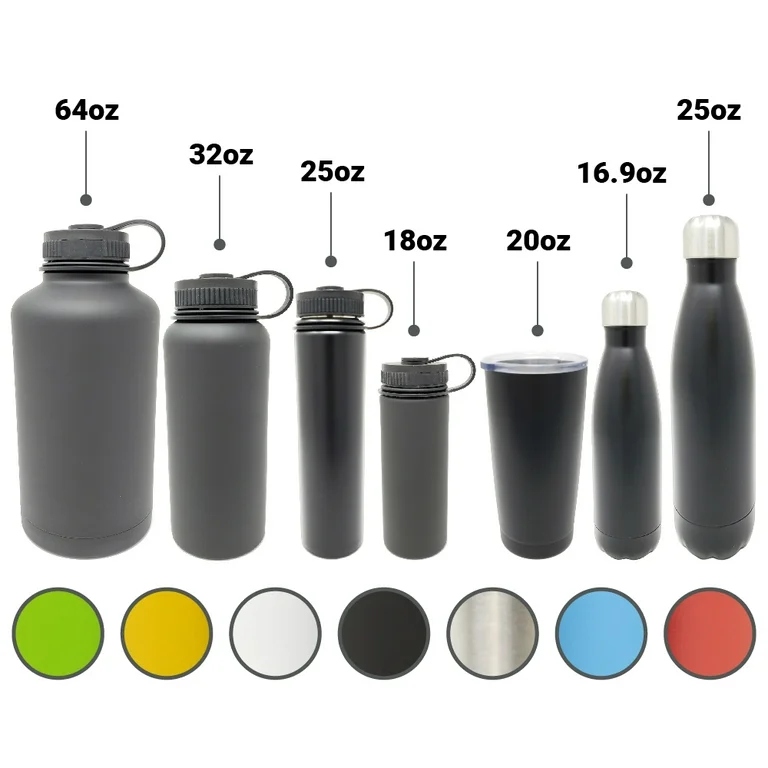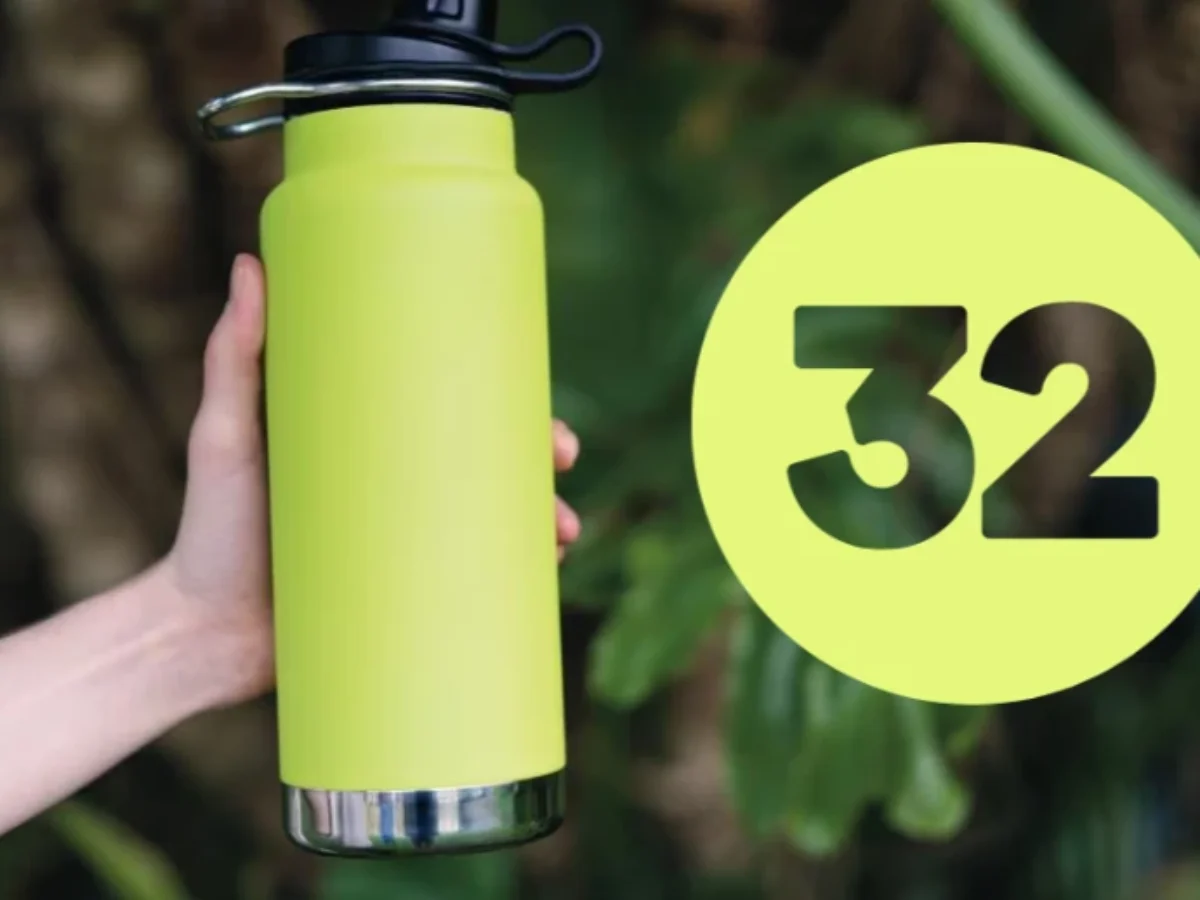32 oz of water equals 4 US cups. Each cup holds 8 fluid ounces. Four cups create 32 ounces. This value equals 0.946 liters in the metric system. It is also ¼ of a US gallon. A gallon contains 128 fluid ounces, so four servings of 32 ounces equal one gallon.
Clear conversion tables show 32 ounces equals 946 milliliters. The conversion depends on the system. In the US customary system, 1 fluid ounce equals 29.5735 milliliters. In the Imperial system, 1 fluid ounce equals 28.413 milliliters.

How Much is 32 oz Compared to Daily Needs?
The National Academies of Sciences, Engineering, and Medicine (NASEM) recommend 3.7 liters (125 oz) of fluids for men and 2.7 liters (91 oz) for women. These totals include water, beverages, and water-rich foods.
32 ounces equals 25.6% of the male target and 35.1% of the female target. This shows 32 oz alone is insufficient for most adults.
Harvard School of Public Health confirms men need about 13 cups (104 oz) and women about 9 cups (72 oz) daily. Four cups (32 oz) is only 44% of the female guideline and 31% of the male guideline.
When Can 32 oz Be Sufficient?
32 ounces can be sufficient under limited conditions. If diet supplies water through fruits, vegetables, soups, and beverages, total hydration may reach healthy levels. People in cool climates with low activity levels and smaller body sizes may meet hydration needs with 32 ounces of plain water plus food moisture.
The European Food Safety Authority (EFSA) notes about 20% of daily hydration comes from food. A diet rich in cucumber, watermelon, tomatoes, and lettuce provides fluid. In such cases, 32 ounces of water adds to dietary hydration and may be adequate.
Why 32 oz May Not Be Enough
Dehydration risk increases when fluid intake is too low. Signs include dry mouth, dark urine, headache, fatigue, and dizziness.
Physical activity, heat exposure, or illness increases fluid losses. Sweat losses during exercise may reach 1–2 liters per hour. A person drinking only 32 oz per day may experience chronic dehydration in such cases.
The Cleveland Clinic states that typical daily intake should fall between 73 and 100 oz, depending on personal variables. This range is higher than 32 oz. Insufficient hydration affects blood circulation, kidney function, and temperature regulation.
How Many 32 oz Bottles Equal Common Goals?
One 32 oz bottle equals 4 cups. Two bottles equal 64 oz, often considered a “half-gallon.” Four bottles equal 128 oz, which equals 1 US gallon. This measurement system helps people track hydration using bottle counts.
Fitness communities often target 1 gallon per day. That equals four 32 oz bottles.
In metric, one 32 oz bottle equals 0.946 liters. Two bottles equal 1.892 liters. Four bottles equal 3.784 liters. This aligns with many international guidelines.
32 oz in Everyday Containers
Clear measurement of 32 oz in household items helps visualization:
-
1 large water bottle (typical sports size).
-
2 standard soda cans (16 oz each).
-
4 cups of water.
-
1 quart container (since 1 quart = 32 oz).
-
Almost 1 liter bottle (0.946 liters).
Understanding equivalence supports portion control and hydration tracking.
Health Impact of 32 oz of Water
Benefits
Drinking 32 oz hydrates cells, supports digestion, maintains body temperature, and lubricates joints. Water supports metabolism and nutrient transport. Even 32 oz improves fluid balance when combined with water-rich foods.
Limitations
32 oz alone rarely meets daily hydration needs. Adults generally require more. People who drink only 32 oz risk increased urine concentration, kidney stone formation, and reduced physical endurance.
Risks of Overhydration
Health sources note excessive intake can cause hyponatremia (low blood sodium). However, 32 oz is not excessive. Dangerous intake occurs when several liters are consumed rapidly.
Special Considerations
-
Athletes: Sweat loss during intense activity increases demand. A marathon runner may lose 2–3 liters in 2 hours.
-
Children: Fluid needs scale by weight. A 5-year-old may require 1 liter per day; 32 oz nearly meets this.
-
Pregnancy: Needs increase by about 0.3 liters daily.
-
Breastfeeding: Needs increase by about 0.7 liters daily.
-
Elderly: Reduced thirst response increases dehydration risk. 32 oz often proves insufficient.
How to Track Hydration Effectively
Ensure accurate tracking of fluid intake:
-
Count all beverages: water, milk, tea, coffee, soups.
-
Count water-rich foods: fruits, vegetables, yogurt.
-
Check urine color: light yellow indicates good hydration.
-
Divide intake through the day: smaller intervals prevent overload.
Hydration calculators estimate needs by weight, activity, and environment. For example, a 70 kg adult may require 2.5 liters per day, far more than 32 oz.
Scientific Authority on 32 oz Intake
The Institute of Medicine defines adequate intake as total water from foods and beverages. World Health Organization (WHO) emphasizes adequate hydration prevents kidney stones, urinary tract infections, and constipation. 32 oz of water contributes to this balance but is rarely complete.
Summary Table of Conversions
| Unit | Equivalent to 32 oz |
|---|---|
| Cups | 4 cups |
| Pints | 2 pints |
| Quarts | 1 quart |
| Liters | 0.946 L |
| Milliliters | 946 mL |
| Gallon | ¼ gallon |
Learn More: Detailed Guide to HCOOCH CH₂ H₂O: Hydrolysis, Properties, and Applications
Why Does Pure Water Dehydrate You? Myths, Truths, and Science Explained
Conclusion
32 oz of water equals 4 cups, 0.946 liters, or ¼ gallon. It provides hydration benefits but covers only 31–44% of daily fluid recommendations for adults. It may be sufficient when combined with food moisture and other beverages. It is insufficient as the sole fluid source for most healthy adults. Tracking hydration with bottle counts, urine color, and dietary sources ensures adequate intake.

